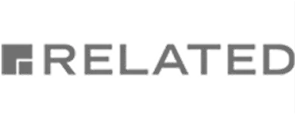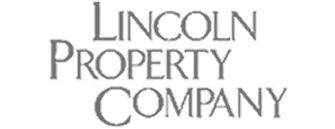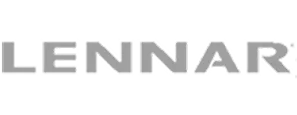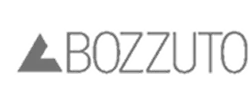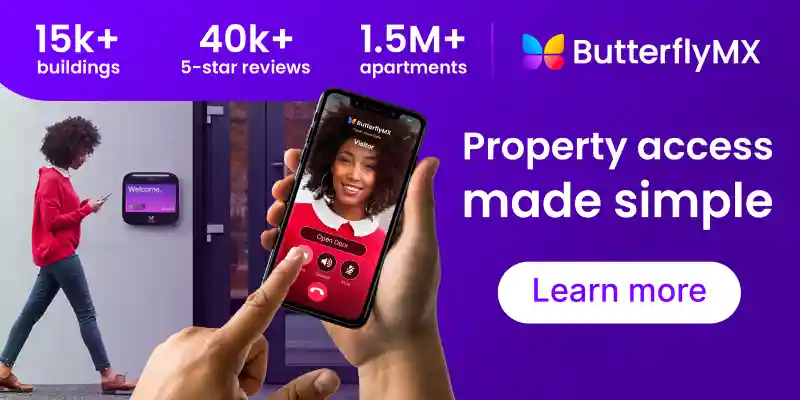Key takeaways
- Proptech is evolving from optional innovation to essential infrastructure for NYC property owners and managers in 2025.
- New York City remains a leader in real estate tech adoption, driven by regulatory demands, operational challenges, and tenant expectations.
- Hybrid work and shifting urban patterns are reshaping property use, boosting demand for flexible, mixed-use, and tech-enabled buildings.
- The most impactful proptech trends in 2025 for NYC focus on centralization, automation, and improving the tenant experience.
- Choosing the right proptech depends on your building type, tenant needs, regulatory obligations, and existing systems.

New York City has long led the way in real estate innovation, and 2025 continues to build on that momentum.
Proptech, short for property technology, refers to the tools and platforms transforming how real estate is bought, sold, managed, and experienced. From digital leasing solutions to building automation systems, proptech reshapes every corner of the industry.
This post examines the proptech landscape of 2025 and the influences shaping NYC’s real estate market. Plus, you’ll learn about the tools and strategies that matter most for multifamily, commercial, and mixed-use buildings.
In this post:
- What is the future of proptech in 2025?
- NYC real estate outlook for 2025
- 7 proptech trends in 2025 for NYC real estate
- How to evaluate which proptech trends are right for your NYC property
- Propetch trends FAQs
What is the future of proptech in 2025?
Proptech continues to grow as a critical part of the real estate industry, driven by rising demand for efficiency and digital tools. In 2024, the sector saw increased venture capital investment, signaling strong confidence in the long-term value of property technology. Proptech startups and established companies alike are expanding their offerings to meet the needs of owners, operators, and residents.
Moreover, macroeconomic pressures are accelerating this growth. Property teams face ongoing labor shortages, rising costs, and new expectations around sustainability and energy performance. ESG compliance is no longer optional, and more residents now expect smart, responsive buildings that align with their lifestyles.
New York City remains a major hub for proptech innovation. With a dense real estate landscape and a large network of tech firms, investors, and forward-thinking property managers, NYC is often where new tools are piloted and refined before expanding to other markets.
NYC real estate outlook for 2025
New York City’s real estate market continues to evolve as the city moves further into its post-pandemic recovery. Here’s how:
- Urban activity is increasing, with more people returning to transit, retail, and in-person work, although not always on a full-time basis. This gradual return is shaping demand across all property types.
- Office space continues to feel the effects of remote and hybrid work models. Many companies are downsizing or reconfiguring their footprints, resulting in increased vacancy rates in traditional office buildings. At the same time, developers and property owners are exploring alternative uses for underutilized spaces.
- Mixed-use and adaptive reuse projects are gaining traction. Properties that combine residential, retail, and flexible office space are becoming more common, especially in neighborhoods with shifting demographics or declining demand for commercial real estate.
- On the residential side, rent trends vary by borough and asset class, but demand remains steady in many areas. However, supply is affected due to a slowdown in new construction and challenges in the permitting process. These factors are contributing to tighter markets in some parts of the city.
7 proptech trends in 2025 for NYC real estate
Proptech continues to reshape the way buildings are managed, leased, and experienced in New York City.
Throughout 2025, new tools are helping property teams meet shifting tenant expectations, regulatory demands, and operational challenges.
Here are seven key trends transforming NYC real estate this year:
- Smart access control and building automation
- AI-driven property management tools
- ESG and energy-efficiency tracking technologies
- Data-driven leasing and marketing platforms
- Tenant engagement and amenity platforms
- IoT-based security and monitoring systems
- Centralized property operations platforms
1. Smart access control and building automation
More NYC properties are adopting mobile-based access systems that allow residents, staff, and guests to unlock doors using smartphones or other remote credentials. These systems often include visitor management features that streamline entry for deliveries, contractors, and guests.
Many of these tools now integrate with delivery platforms and property management software. This creates a seamless experience for building staff while improving record-keeping and access tracking. Centralized control is becoming a priority. Property managers want systems that are easy to manage across multiple entry points while offering convenience and consistency for tenants.
2. AI-driven property management tools
AI is making property operations more efficient through predictive maintenance, rent optimization, and automated lease management. These tools enable teams to respond to issues before they escalate and adjust pricing based on market trends.
Natural language processing (NLP) powers chatbots and self-service portals that handle service requests and leasing questions. This reduces the need for manual intervention and shortens response times.
Lastly, property managers are using AI to lower operational costs and make decisions more quickly. With real-time insights, teams can act on data rather than guesswork.
3. ESG and energy-efficiency tracking technologies
NYC building owners face increased pressure to comply with Local Law 97, which limits carbon emissions. Proptech tools are helping track and manage energy use to avoid penalties.
Moreover, smart HVAC systems, occupancy sensors, and leak detection devices are becoming more common. These systems collect data that property teams can use to adjust building performance in real time.
Lastly, green building certifications are also influencing tenant preferences. Many residents and businesses now consider sustainability when making their leasing decisions.
4. Data-driven leasing and marketing platforms
Leasing platforms now include tools like virtual tours, AI-generated listings, and lead scoring to help properties market more effectively. These tools streamline the tenant search and reduce manual work for leasing teams.
Targeted advertising platforms and CRM integrations help teams nurture leads and tailor marketing campaigns. Data from these tools improves follow-up and outreach.
The goal is to reduce time-to-lease and improve conversion rates by focusing on qualified leads and offering a better digital experience.
5. Tenant engagement and amenity platforms
Mobile apps that connect residents to building events, amenity bookings, and feedback tools are becoming standard in many NYC buildings. These platforms support a sense of community while giving residents more control over their experience.
Some properties are testing lifestyle-as-a-service models that bundle wellness, coworking, or entertainment features into the residential offerings. These models are particularly prevalent in high-end multifamily buildings and contribute to social well-being.
Improved tenant engagement often leads to better retention and stronger satisfaction scores, which benefits long-term property performance.
Discover Amenity Reservations with ButterflyMX:
6. IoT-based security and monitoring systems
Internet of Things (IoT) security tools now include smart surveillance cameras, remote monitoring systems, and automated alerts for unusual activity. These tools provide building staff with more oversight and faster response capabilities.
Both residential and commercial buildings are adopting these systems to strengthen day-to-day operations and protect assets.
Security is becoming part of a broader connected building strategy, where systems share data across platforms to improve visibility and coordination.
7. Centralized property operations platforms
Many NYC owners and managers are shifting to centralized platforms that handle access control, leasing, maintenance, communication, and analytics in one place. These tools simplify complexity and facilitate the management of large portfolios.
A single dashboard gives managers and owners a clear view of performance, open tasks, and tenant needs across multiple buildings.
As such, integration between systems is becoming a key factor in platform choice, especially for owners with diverse assets spread across the city.
How to evaluate which proptech trends in 2025 for NYC to invest in
- Assess your property type and use case. Every building has different operational needs. A large building in Midtown will require different commercial real estate technology than a walk-up residential building in Brooklyn. Start by identifying your property’s primary use and operational priorities.
- Understand your tenant demographics. Consider who lives or works in your building. A younger tenant base may expect mobile-first solutions and flexible amenities, while commercial tenants might prioritize security and infrastructure stability.
- Review your existing systems and infrastructure. Examine the existing technologies in place. Determine whether new tools can integrate with your current access control, maintenance, or leasing platforms. This helps reduce disruptions and maximize the value of any upgrades.
- Account for local regulations and compliance needs. NYC has specific rules around sustainability, safety, and accessibility. Ensure that any new proptech solution supports compliance with laws such as Local Law 97 or building safety standards.
- Focus on return on investment and operational impact. Choose technologies that provide measurable benefits. Look for tools that reduce manual work, cut operating costs, or improve service response times. The goal is to enhance performance without introducing additional complexity.
- Prioritize tenant experience and satisfaction. Consider how each tool affects daily life for tenants. Proptech should simplify access, communication, and the use of amenities. A better tenant experience often leads to higher retention and fewer service complaints.
- Start with scalable, easy-to-integrate tools. Begin with technologies that can be rolled out gradually, such as mobile access control or virtual leasing platforms. These solutions offer flexibility, allowing property teams to adapt at a manageable pace while tracking performance.
Propetch trends FAQs
What is the prediction for proptech in 2025?
Proptech is expected to continue growing as more real estate teams seek ways to operate more efficiently and meet the evolving expectations of new tenants. In 2025, the focus is shifting toward AI-powered tools, automation, and sustainability features that help address rising costs and regulatory pressure.
Property owners and managers are adopting technology that supports long-term goals rather than one-off fixes. Tools that can integrate with existing systems and offer measurable performance improvements are gaining the most traction.
What is the NYC real estate outlook for 2025?
New York City’s real estate market is expected to see modest growth, with activity concentrated in select property types. As such, mixed-use developments, adaptive reuse projects, and buildings equipped with tech-forward features are attracting more attention from both investors and tenants.
Lastly, owners are reevaluating how properties are used and managed. Shifting work patterns and lifestyle changes are pushing the market toward flexible layouts, digital services, and energy-efficient systems.

Get your free quote!
Fill in the form below, and we'll email you right back.
Want a free quote?
Fill in the form below, and we'll email you right back.
You’ll be redirected shortly...

